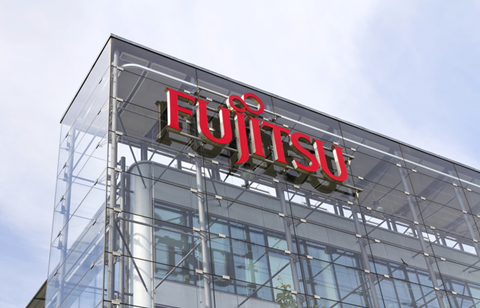
At Fujitsu, employees’ wellbeing and safety has always been a high priority. The Covid-19 (Coronavirus) pandemic placed this even more under the spotlight.
Paula Evans, head of pensions and benefits, UK and Northern Ireland, explains how the organisation’s thinking behind its benefits strategy seeks to support this: “[The philosophy] is really to help our employees feel secure and engaged just by giving them the right access to a wide range of benefits that help them shape the way that they want to work, and the way that they want to live their lives.
“The pandemic has made everybody really mindful of their own safety, security and wellbeing so that's really come to the fore. And of course we want to make sure that we've got things that give people a great deal, so really good value for money.”
Spotlight on wellbeing
The IT services provider has around 7,000 employees in the UK and Ireland, some of whom had to remain working in its offices, on customers' sites, or out on the road on mobile engineering sites, while others quickly adopted remote home working in line with the government-imposed restrictions in March.
Fujitsu boosted its focus on the physical and mental wellbeing of employees to help staff adjust to the new working landscape. “We've focused both on physical and mental wellbeing throughout the pandemic,” says Evans. “Because people have been adapting to a new normal that didn't feel at all normal for a very long time, it's been really important to try to help them come to terms with what that looks like, so that they can feel as healthy and well as they possibly can.”
In recognition of the challenges that home working brought to its employees, Fujitsu introduced a number of new benefits to offer additional support. This included paid carers leave, and the option to purchase extra annual leave and spread the cost throughout the year.
“We could see that people struggled with the extra demands of family life throughout the pandemic, and we put in place, very early on, the option for any employee to take up to five days’ worth of paid carers leave," explains Evans. "That was a completely new benefit and we've seen 900 of our employees take that up already. That's helped in managing the additional challenges that childcare at home, while trying to work, will have brought to a lot of working parents.”
Fujitsu already had a holiday-buy policy in its flexible benefits programme, but as employees would have chosen this benefit at the last enrolment window in November 2019, the employer also brought in the option to buy additional leave because of the impact the pandemic has had on holiday plans.
It also ran things like virtual yoga classes and webcasts for employees and managers to inform them of the support available and the new ways of working during the pandemic. “We’ve added in some presentations from our employee assistance provider (EAP) provider to help employees understand all the services that it could provide,” says Evans. “We've also, through some of our other partnerships with our benefits providers, been able to provide access to a lot of online learning for children as well as the parents.”
Employee feedback
With employees spread across so many different types of working locations, Fujitsu had to ensure that it reached its whole workforce to determine what support they needed and to provide them with information about all of its initiatives. “We've run quite a lot of regular pulse surveys to understand how employees are feeling, and through our webinars, we've also been able to shape future agenda items,” says Evans. “It’s been very much an evolutionary process, but it’s been really important to be understanding and listening to employees to gauge what they need from us. We've also thought about the different needs of the group; mobile workers potentially have quite different requirements from all of the rest of the [organisation] who suddenly were working from home permanently, without necessarily having chosen that.”
Pension scheme changes
In 2019, Fujitsu made the decision to move its defined contribution (DC) pension scheme from a sole employer trust to a master trust, Willis Towers Watson’s Lifesight scheme. It consulted with employees and ran an active communications campaign to ensure they understood the reasons for the change. “The rationale for making the change was that it enabled us to deliver the complete range of retirement flexibilities to our employees, so they could access an annuity if they wanted, but they could also access income drawdown directly from Lifesight," explains Evans. "They get financial advice at the time to help them make the best and most suitable decision for them.
"We're really pleased with that because it enabled us to provide all of those new services to employees but also to improve on value for money for members, because we were able to reduce all of the investment charges.”
As a result of the change, there has been greater engagement with the pension scheme and because there is a range of tools that help people to better understand their long-term savings, explains Evans. The pensions team at Fujitsu communicated details of the new scheme through a multi-channel campaign, which included online webinars, live discussion boards, going out on the road to meet employees face-to-face, bite-sized videos and letters to home addresses. New contributions into Lifesight began in December 2019 and all employees were moved across to the new plan in March 2020.
In October 2020, Fujitsu ran a series of pension education webinars, which were watched by 1,000 employees. The sessions covered an introduction to the tools available through Lifesight, investment options, and how employees may plan to spend their retirement pots. The sessions have also been recorded so that more employees can access these through the pensions portal in their own time.
Broad benefits offering
With a large employee base, Fujitsu makes sure that its benefits offering is broad enough to appeal to everyone. “The need or the desire varies according to the person concerned,” Evans says. “We have a good range and people can pick from that, and tailor their own consumption of benefits as suits them. We give everybody a core foundation set of benefits like life cover, pensions saving opportunity, but then through our [flexible benefits] programme, they can tailor in lots of different things to suit them.”
The organisation also runs an employee recognition scheme, provided by Xexec, in order to show appreciation for employees demonstrating the behaviours and values that are important to the organisation. Through the scheme, managers can recognise employees with an award, and colleagues can nominate their peers to receive an award, for things such as teamwork, customer service and integrity.
Fujitsu also runs a bikes-for-work scheme, which has seen an 87% increase in take up this year.
Employee voice
The organisation ensures that the benefits package is valued and appreciated by staff, and that it is not offering things that are not needed. It runs extensive communication campaigns to both inform employees about their benefits, and also garner feedback and suggestions. Keeping in touch with a widely dispersed workforce has been even more important, says Evans. “We ask, we measure, we monitor take up. It really helps to then shape the offering to suit the needs within the [organisation].
“We’ve asked in surveys how people feel, and we’ve seen quite a significant increase in engagement scores through the pandemic, which is really good from our perspective.
“It's great to see that employees have clearly been able to share and tell us that we've got that right. So the test for us now will be to continue to build on that and to make sure that we sustain and improve on those scores going forward as well.”
At a glance
Fujitsu is an IT services and software orgaisation, whichi provides support to large private and public sector organisations. Its job roles include a wide range of IT roles such as technical architects and security, as well as functions including HR, finance, sales and marketing.
It has around 7,000 employees in the UK and 130,000 around the world.
The average age of employees is 46, and the gender split is 75:25 male:female. The average length of services is 13 years.
Business objectives that impact on employee benefits
To continue to provide benefits to employees that help to shape their work and support them in their physical and mental wellbeing.

Career history
Paula Evans first joined Fujitsu in 2007 as pensions manager. Before joining the organisation she ran a large team at a pensions consultancy. “One of the things I really like about Fujitsu is it can provide [someone] with constant change, if that’s what they like, and I do," she says. "Over my time at Fujitsu, I’ve been able to learn, develop and broaden out my own experience, and I’ve taken on a variety of extra aspects to my work. I’m now head of pensions and benefits and in that I also cover all our health-related benefits and recognition. It’s a broad role.”
Evans says that the most transformational thing she has done is, along with a team within Fujitsu both in the UK and from its Japanese parent company, along with the trustees of three of its largest defined benefit pension schemes, was to inject an extra £800 million into those plans. That was a huge investment that enabled the organisation to improve the funding of those pension plans and significantly de-risk the investments. “It was all-consuming at the time, but I’ll always be proud of what we achieved with that change,” says Evans.
















